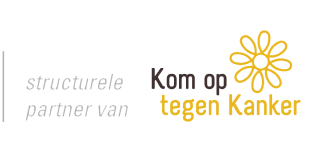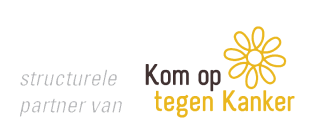Doctoraatsonderzoek: 'Mogelijke neurtoxiciteit bij therapie van kinderen met vaste tumoren'
As survival rates of childhood cancer patientsimproved throughout the last decades, long-term sequelae after treatment became an important area of research. Given that childhood cancer treatments differ according to the specific diagnosis, age at diagnosis, response to treatment, etc., they can result in very different long-term outcomes and symptoms. One of the potential side effects includes neurocognitive impairment. Neurosurgery, cranial radiotherapy (RT) and central nervous system-(CNS-)directed chemotherapy are known to lead to neurocognitive alterations in childhood brain tumor and leukemia patients. By contrast, in solid non-CNS tumor patients, findings about potential neurotoxicity due to intravenous chemotherapy only, remain limited. Nevertheless, case reports showed that even (high-dose) intravenous chemotherapy can induce acute (leuko-)encephalopathy. However, underlying neurotoxic mechanisms and neurocognitive outcomes are still to be unraveled. Given that neurocognitive research in childhood cancer remained restricted to patients who were treated with CNS prophylaxis only, the main goal of this PhD project was to explore potential neurotoxicity due to high-dose intravenous chemotherapy in pediatric oncology. By combining neurocognitive assessments, genetic analyses, clinical (treatment and symptom) features and advanced neuroimaging techniques in both current pediatric oncology patients and (adult) survivors, we aimed to discover new insightsinto neurodevelopmental patterns and related biomarkers during childhood cancer. To address neurocognitive outcomes, behavioral tests included intelligence assessments, verbal and visual memory, attentional functioning, visuomotor functioning, word fluency and object naming. Combined with behavioral assessments, MRI imaging covered state-of-the-art advanced MRI sequences including diffusion-weighted (DWI), myelin-water imaging (MWI), FLAIR, T1-weighted imaging, resting state functional MRI (RsfMRI). Based on these images, we aimed to investigate anatomical and functional information of the developing brain after highdose chemotherapeutic treatments.
First, we performed an extensive literature review which summarized the existing evidence on potential neurotoxicity of non-CNS directed (i.e. intravenous) chemotherapy in solid non-CNS tumor patients. This review demonstrated that current research in pediatrics is very limited so far, with a lack of research in solid tumor patients.
Second, in order to explore neurocognitive developmental patterns in current childhood cancer patients, a longitudinal follow-up study of intelligence scores was performed in childhood leukemia patients, who were treated with intrathecal chemotherapy. This study demonstrated increases in verbal and performance IQ scores (which were within the normal range), and the negative impact of younger age at diagnosis and lower educational status of parents.
Third, a cross-sectional survivor cohort study was performed in adult survivors of childhood non-CNS tumors, treated with high dose intravenous chemotherapy only. To investigate chemotherapy-induced neuro-anatomical and physiological changes in these patients, different MRI sequences were investigated. More specifically, white matter microstructure was investigated using FLAIR, DWI and MWI, while grey matter anatomical and functional information was derived from T1-weighted MRI and rsfMRI, respectively. FLAIR images were first visually inspected for white matter lesions (i.e. observable leukoencephalopathy), which were further investigated using additional parameters estimating white matter integrity (derived from DWI and MWI). In this study, a substantial group of 27% of the childhood cancer survivors demonstrated leukoencephalopathy, which was associated with DWI, but not MWI. Given that the latter imaging type is more closely associated with the level of myelination, this study suggests long-term neurotoxicity but with possibly midterm remyelination and other underlying long-term neural damage. Leukoencephalopathy was mainly associated with delayed reaction times on focused and divided attention tasks. In addition to the observable lesions, DWI images provide more information about white matter directionality (e.g. tractography) and microstructure. Hence, we aimed to clarify white matter microstructure in long-term survivors using multiple recent diffusion models. These analyses provided evidence for central white matter tracts to be more affected (i.e. showing lower fiber density) compared to other tracts. Complementing these white matter investigations, we analyzed the grey matter structure and functioning using T1 and RsfMRI. Based on T1-weighted images, we encountered lower grey matter density and cortical thickness, while RsfMRI demonstrated differences in functional co-activation of brain regions in patients compared to controls. This mainly appeared in frontal and parahippocampal areas, of which the latter also showed decreased functional coherence.
Fourth, although evidence for chemotherapy-induced neurotoxicity is increasing based on cross-sectional studies, longitudinal studies are non-existing in children. Therefore, a preliminary neuroimaging and neurocognitive follow-up study was conducted of current nonCNS tumor patients who received high doses of chemotherapy. This study demonstrates acute leukoencephalopathy but rather stable cognitive scores. In addition to the survivor study, this suggests that behavioral effects of neurotoxicity would possibly only occur in a delayed stage.
Finally, as secondary brain damage can be hypothesized in case of extensive neural damage, recent applicable techniques are discussed to investigate the affected underlying brain network, or so-called “structural human connectome”. Multi-modal analyses were applied in patients who suffer from long-term clearly visible brain damage located in the cerebellum, in childhood posterior fossa tumor survivors. This study suggested not only global decline in neural integrity, but also possible topological reorganization of the network. To investigate structural connectivity, pros and cons of these methods are summarized for future directions.


